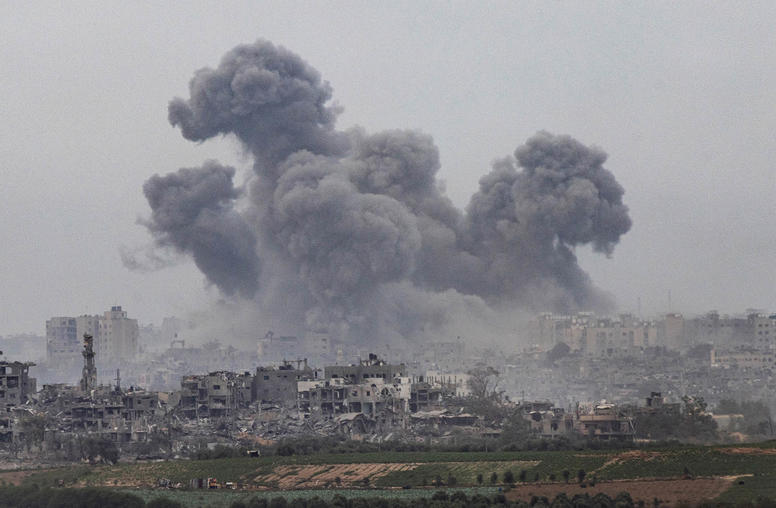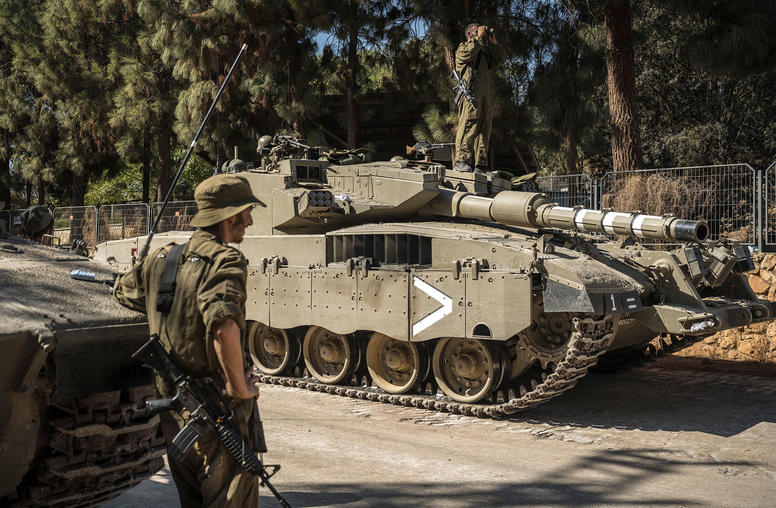President Obama's Speech and the Arab-Israeli Conflict
USIP’s Scott Lasensky outlines the significance of President Barack Obama’s speech for the Arab-Israeli conflict and U.S.policy.
May 19, 2011
 USIP’s Scott Lasensky outlines the significance of President Barack Obama’s speech for the Arab-Israeli conflict and U.S.policy.
USIP’s Scott Lasensky outlines the significance of President Barack Obama’s speech for the Arab-Israeli conflict and U.S.policy.
- What’s new on the Arab-Israeli conflict, particularly given the stalemate since talks broke down last fall and the worrisome trends pointing toward a showdown at the United Nations?
- How does the Arab-Israeli question fit into the broader policy the president outlined on the Arab world?
What’s new on the Arab-Israeli conflict, particularly given the stalemate since talks broke down last fall and the worrisome trends pointing toward a showdown at the United Nations?
The U.S. is now formally on record, in no uncertain terms, advocating for an initial deal based on the 1967 lines, with land swaps, and agreed security provisions.
The administration had danced around that formulation for some time, but typically framed it as an aspiration of the parties -- rather than U.S. policy. The president today was pretty blunt: “Palestinians should know the territorial outlines of their state; Israelis should know that their basic security concerns will be met.” Though he was less clear about what happens next.
President Obama also seemed to be signaling that the U.S. does not agree with Israeli Prime Minister Benjamin Netanyahu’s position on Israel holding onto the Jordan valley, given his reference to the permanent Palestinian border with “Jordan.”
The president essentially said Jerusalem and refugees should be set aside for now – which will rankle those who believe that unless all the core issues are on the table, there’s no constituency for peace; but it will reassure those who feared that a U.S. position on these two sensitive questions might upend politics on both sides.
President Obama was very explicit about mutual recognition, mentioning the key phrase “Jewish state,” though the formulations he used do not seem to shift U.S. policy dramatically -- given how far his administration and the Bush administration went on this issue.
How does the Arab-Israeli question fit into the broader policy the president outlined on the Arab world?
First, President Obama was very clear that he believes this conflict to be interconnected with other key concerns in the region. “This conflict has come with a larger cost to the Middle East, as it impedes partnerships that could bring greater security, prosperity, and empowerment to ordinary people,” the president said.
Just as the Israeli President Shimon Peres said on his recent visit to Washington, President Obama does not want to see this longrunning conflict get in the way of historic changes now taking place in the Arab world and he knows that if completely neglected, the Arab-Israeli issue is likely to get in the way. In short, it was a diplomatic way to restate the question of linkage, which is not popular in all quarters.
Second, the speech seemed to acknowledge that given the tremendous uncertainty and changes sweeping the region, there’s only so much that can be achieved on the Arab-Israeli track. He was careful to signal that the U.S. will not abandon its longrunning pursuit for a comprehensive Arab-Israeli peace, but the undercurrent of the speech was that a lot still needs to be sorted out in terms of political transformations in key Arab states before his administration is going to undertake a major push on the peace process. The “borders and security” approach is all the White House seems to think the traffic can bear, so to speak.
Explore Further
- Eye on the Middle East and North Africa: Experts from the U.S. Institute of Peace (USIP) are closely following developments throughout the Middle East and North Africa. In a series of reports and interviews, they cover a wide range of issues.
- Countries and Regions: Israel
- Countries and Regions: Palestinian Territories



